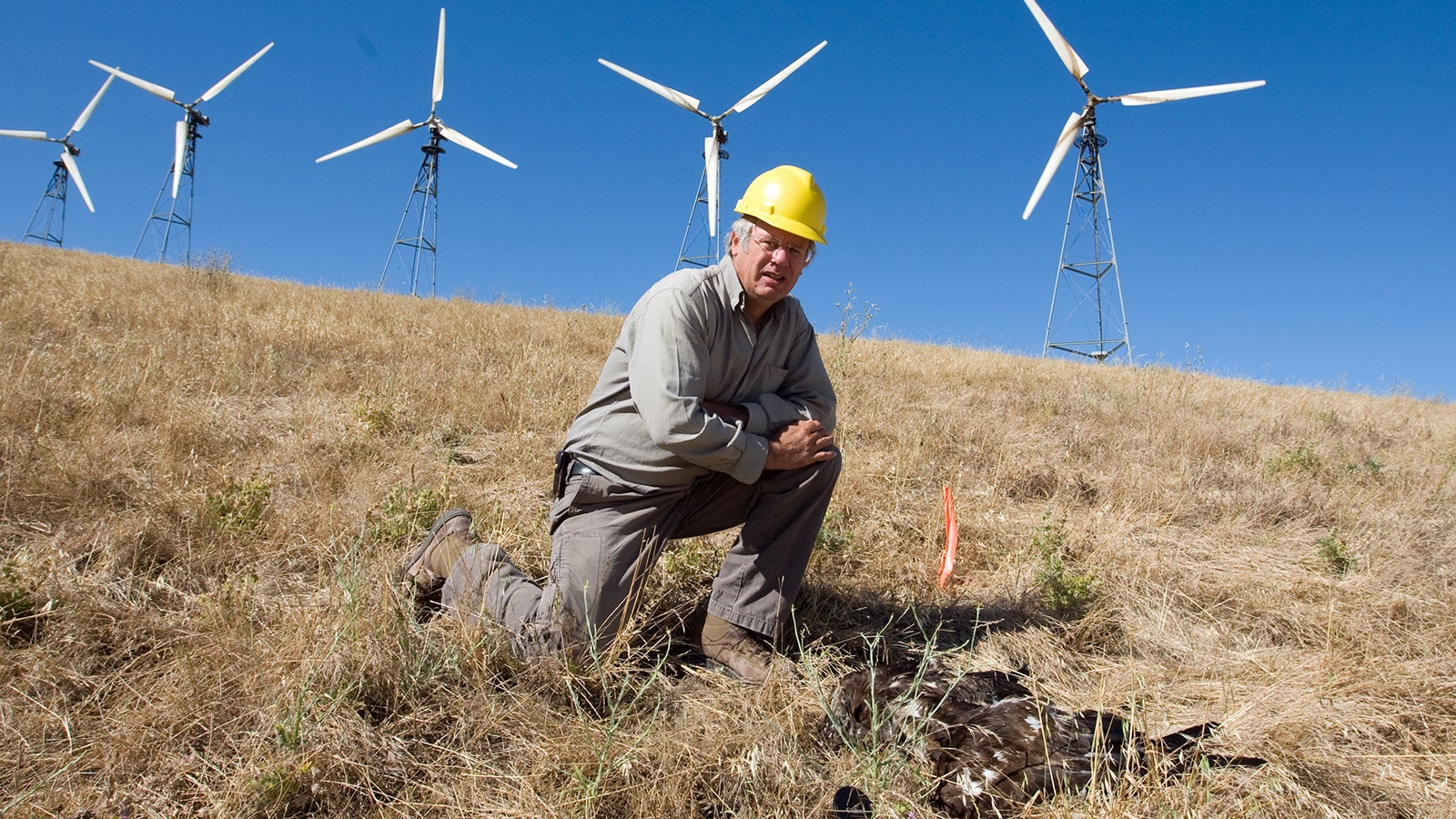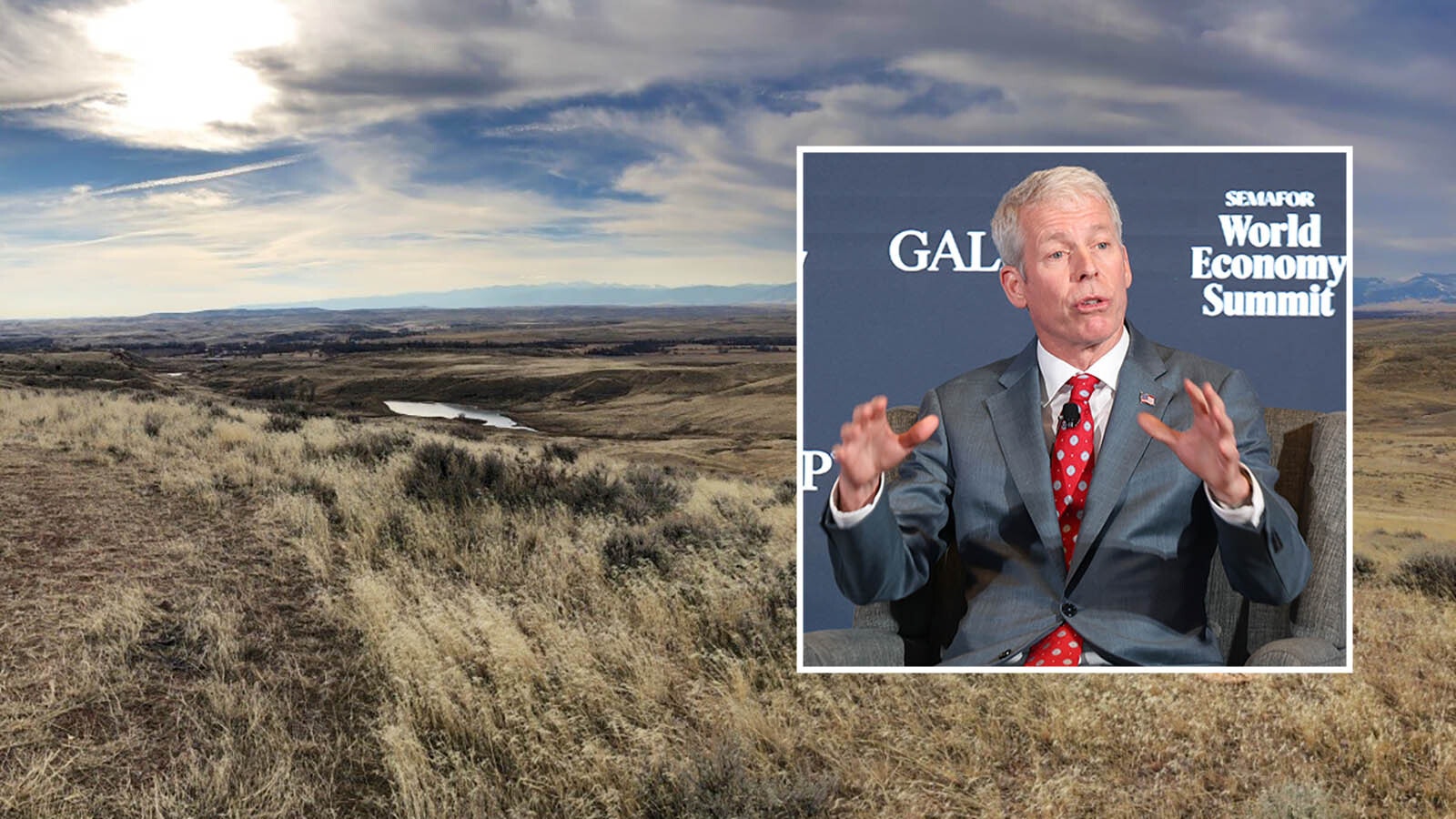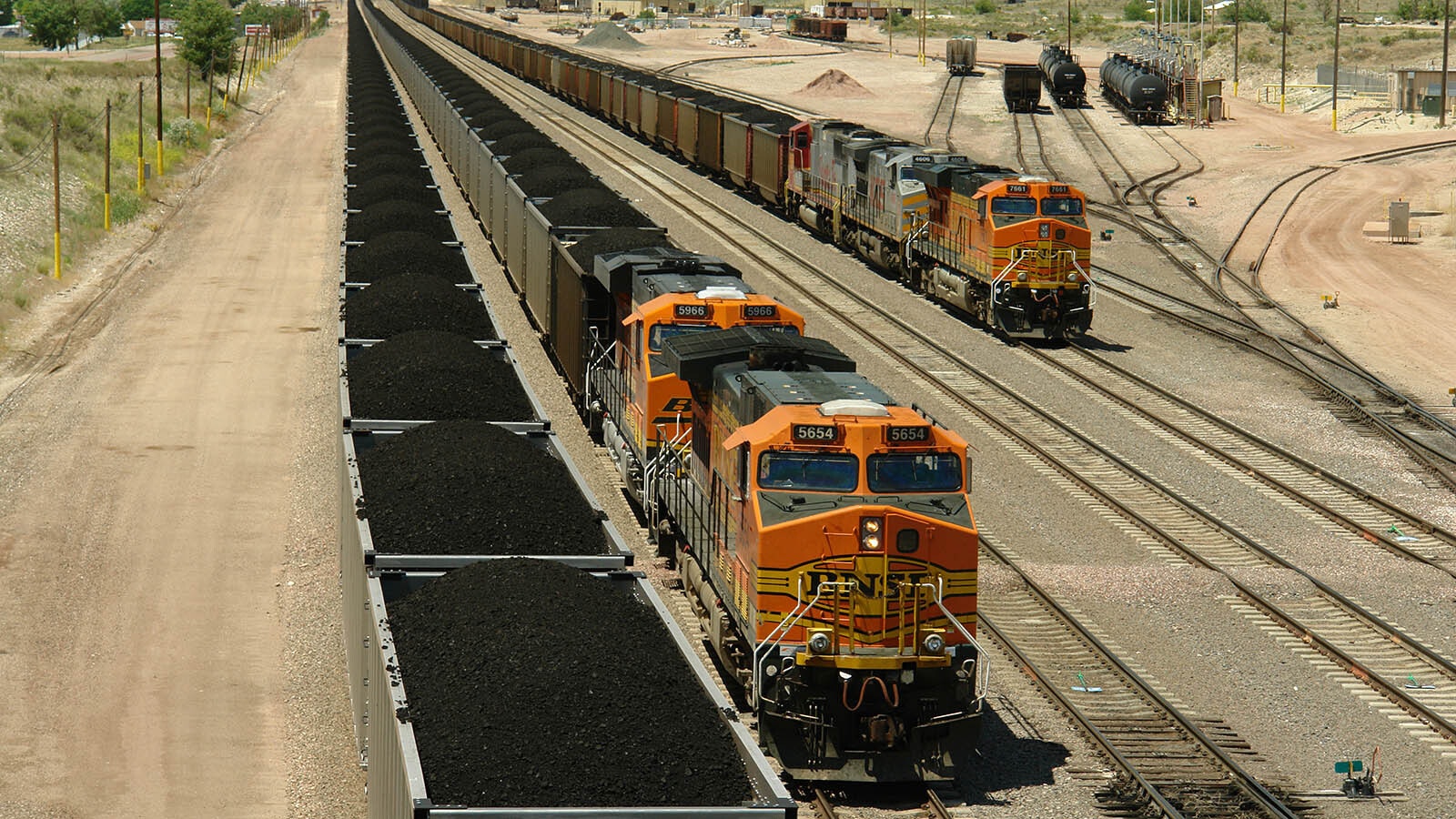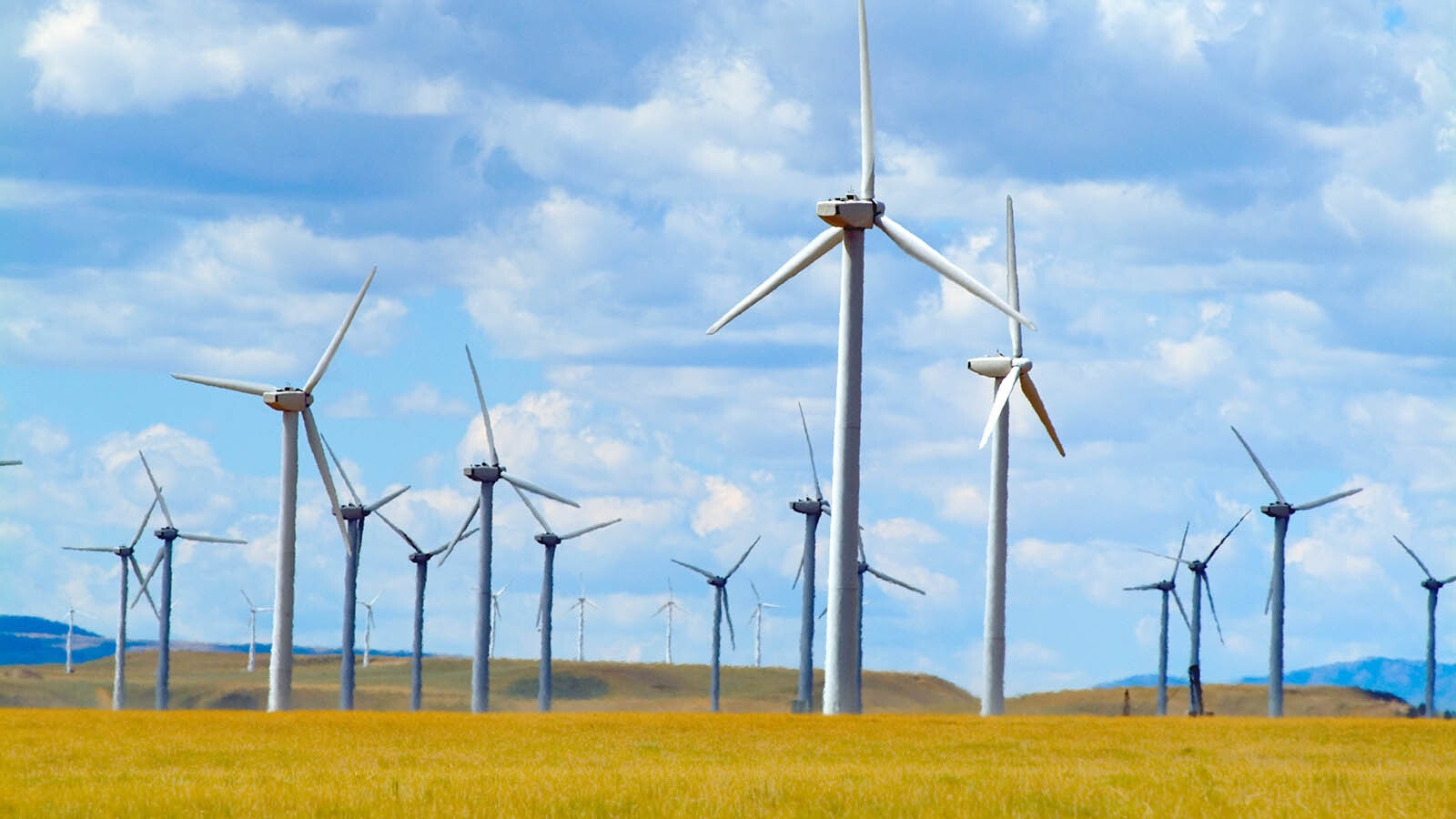Back in the late 1990s, ecologist Shawn Smallwood didn’t think much about connecting avian and bat deaths with the whooshing blades of wind turbines.
It was a concept foreign to him.
But then a long-distance jogging partner he worked with at the University of California-Davis asked him to tag along in a “fatality search” with dogs to sniff out dead bird and bat carcasses caused by the thousands of turbines that dot the picturesque Altamont Pass, a low-lying mountainous region located about an hour’s drive east of San Francisco.
“It was a game-changer for me,” said Smallwood, who said his “mapping skills” of predatory birds launched his career, including secretive trips in coming years to Wyoming to provide “technical data” needed in litigation against the wind industry.
Besides the Altamont Pass and California, Wyoming is considered the other major destination of eagles where their carcasses have been found on a regular basis at the base of wind turbine towers in the United States, Smallwood said.
The first eagle carcass Smallwood found was in a ravine in the Altamont Pass on his initial trip in 1999. That eagle was electrocuted by a power pole that connected with a field of turbines.
“The feathers were burned and frizzled on the ends,” he said. “Eagles are big birds, and I thought, ‘What a waste.’”
‘I’m Not A Team Player’
Smallwood, who had earned a doctorate in ecology from UC Davis, went on to do what academicians who have doctorate degrees do in specialty fields.
He wrote nearly 900 professional reports on ornithology and wind turbines, peer-reviewed 100 journal articles for publication and has been hired by the wind industry to come up with better ways to reduce kills of eagles, predatory birds and bats.
In time, however, the industry began turning on him when he stood his ground on contrarian points of view. Some even labeled him as a fraud who fabricated data.
Cheyenne-based Western EcoSystems Technology Inc. (WEST), a wind energy consultancy, even approached him once with a job offer — but backed off.
“I’m not a team player,” he said of himself when WEST asked him if he could go along with their team approach.

No Single Fix
Smallwood maintains that he’s learned a few things over the past few decades.
For instance, painting a single turbine blade black or adding stripes does nothing to improve the perception of eagles or other predators, and thereby cut down on their deaths.
They still get whacked as they sometimes circle and soar into the blades — especially at night, he said.
Neither does it help cut down on eagle deaths to push for fewer and larger wind turbines that are spaced farther apart, as some in the industry have suggested.
While this approach might cut down on some measurable eagle deaths, he conceded that evidence seems to show that bat deaths increase due to a vacuum created with larger blades that sucks them into the path of the blade.
More Transparency Needed
Smallwood also said that he’d like to see more transparency on the sharing of reports and data on avian deaths, and that money be used to conduct meaningful research rather than removal of “silly things like roadside carcass removal” and eagle prey — like squirrels and prairie dogs.
Smallwood admitted that his reputation in the wind industry has suffered over the years because of his controversial take on big policy issues.
Even so, Smallwood has been on the payroll of many wind energy companies.
He was once hired by alternative energy company NextEra Energy Inc. to provide consultancy advice on ways to lower bird and bat kills at the Florida company’s 162-megawatt North Sky River wind project in California’s Mojave Desert.
And he even got paid to evaluate whether now-bankrupt Ogin Inc.’s approach was promising for keeping birds alive with its shrouded turbine.

About Those Wyoming Eagles
Even while his resume in California is largely public, Smallwood’s secretive work in Wyoming is a mystery.
For instance, wind farms in Wyoming have faced high-profile fines for killing eagles as part of the Migratory Bird Treaty Act, an international convention protecting a long list of wild birds.
He’s been involved in two of the cases, one of which he has signed a non-disclosure agreement (NDA) with the U.S. Department of Justice.
He confirmed providing “technical data” to the DOJ in a probe that led to a U.S. District Court in Wyoming finding that electric utility giant PacifiCorp violated the Migratory Bird Treaty Act.
Because Smallwood said that he signed an NDA, he declined to discuss details of what technical data he provided to the law enforcement agency for wind farms owned by the Berkshire Hathaway-backed PacifiCorp.
“I can’t talk about this,” he said.
In December 2014, PacifiCorp was sentenced to pay fines, restitution and enroll in community service totaling $2.5 million for causing the deaths of 38 golden eagle and 336 other protected birds — including hawks, blackbirds, larks, wrens and sparrows — at the company’s Seven Mile Hill and Glenrock/Rolling Hills wind projects in Carbon and Converse counties between 2009 and 2014, according to a DOJ statement issued a decade ago.
Works Best In The Dark
In the second case, Smallwood said that he served as an expert witness.
In April 2022, NextEra Energy pleaded guilty to violating the Migratory Bird Treaty Act and was ordered to pay more than $8 million for wind farms in Wyoming and northern New Mexico.
In this case, Smallwood said he was issued a subpoena by the U.S. Attorney’s Office in California to provide data on an assessment of NextEra Energy’s placement of wind turbines in the North Sky River project.
“NextEra hired me to minimize the impacts to migratory birds on the project,” but they didn’t follow the recommendations, he said.
Smallwood said that he’s not sure his testimony in the NextEra Energy case ever went anywhere since the California wind farm wasn’t mentioned in the $8 million fine.
Today, Smallwood is easy to spot when he’s doing field work — if you’re out at night, his preferred time to watch things.
He likes the dark because that’s when bats come out, and coyotes, foxes, squirrels and other predators zig-zag around on the ground underneath the wind turbines to find dead carcasses to feast on.
He’s the lone guy, sitting still in the dark, watching. Nearby is his pricy $34,000 thermal camera to see animal movement at night, binoculars and a GPS device that he uses to map the location of carcasses and animals.
“The early bird catches the worm,” he said.
Pat Maio can be reached at pat@cowboystatedaily.com.





